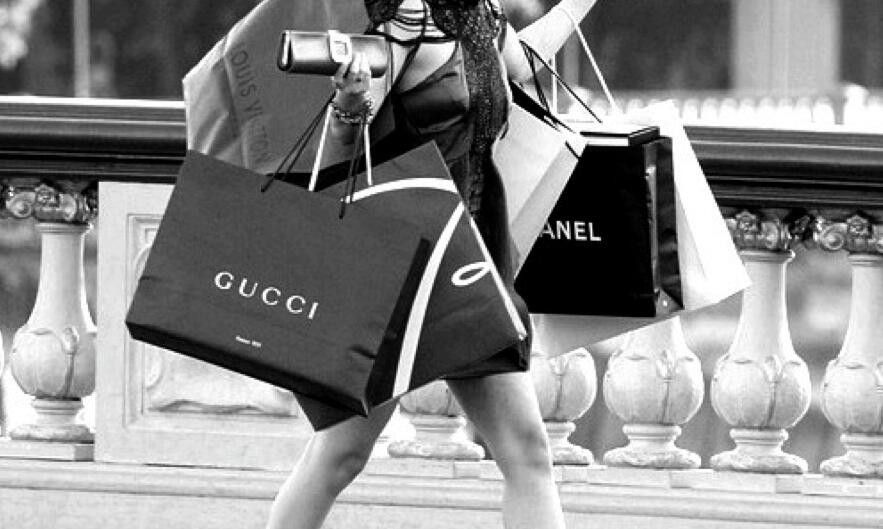The History of Louis Vuitton
- Darren De Hahn

- Apr 28, 2019
- 4 min read
Updated: Nov 27, 2019
What is a fashion blog *cringe* without mentioning Louis Vuitton.
Probably one of the most recognised brands in the fashion world and a household name when it comes to designer clothing and accessories.
They are most well known for their leather items whether that be wallets, handbags or luggage. The overlapping "L" and "V" monogram is what set this brand apart, allowing them to maintain the desirability they have held onto for all these years.

Firstly lets distinguish the difference between a "designer" brand and a "luxury" brand as people so often make the mistake of using these words interchangeably.
A designer brand is one where in most cases there exists a singular designer or creative director who designs the pieces for a collection. Most often this person has started the brand themselves and in the event they retired, would pass the responsibility of keeping the brand alive to a secondary or someone suitable for the position. A feeling of individuality and personality exists with examples of such brands being Raf Simons, Rick Owens etc.
A luxury brand often, although not always, specializes in the accessory department. Making use of the finest quality materials they aim to provide the wearer with a feeling of opulence with their products sitting substantially high on the price scale. Yes this can be a result of the resources utilized during production but believe it or not, a significant amount of the money you just handed to the sales assistant or cashier who by now has made you feel on top of the world has gone toward buying yourself into a lifestyle.
These luxury brands hike up their prices exponentially until they've narrowed down the amount of people who can afford their products to the smallest possible group. This allows them to maintain the image of exclusivity and well, you just gave two years worth of savings to a company who never really wanted you in their circle in the first place.

Let's talk business, shall we?
Of course I'm talking about the business behind the worlds most renowned status symbol.
Louis Vuitton was founded in Paris during the year 1854 and became popular among families searching for the perfect trunks in which to carry their goods during trips. The flat top and bottom of these trunks meant they were easy to stack on top of one another and thus made traveling a much less tedious process.
Delving further into Louis Vuitton's past we soon learn that the Vuitton family had connections with the French Vichy government and Nazi's during their occupation in World War 2. These collaborations resulted in substantial financial gains for the family and assisted exponentially in the growth of the company during the 1940's and thereafter.
This side of Louis Vuitton history is rarely discussed as the company is dedicated to keeping it a secret. Going so far as to claiming that company documents from the year 1930 to 1945 had been destroyed in a fire whenever someone would make an inquiry with regard to the brand and their activities during the war period.
The locks on Louis Vuitton trunks were designed to be impenetrable. Is this an appropriate time to joke about how they weren't able to keep a lock on this story?
No? Let's continue.

Louis Vuitton, as you may think, would surely turn over a new leaf and develop an honest future considering the controversy surrounding their past.
Fair enough this next point involves a large number of luxury brands and not just our friends over at LV. Research and the growing need for transparency are driving people to ask the question "what makes a bag so expensive?".
Investigations into this subject matter have turned up some eyebrow raising results.
On average these companies would mark up the price of their product 20 times with Louis Vuitton specifically marking products up as much as 3000%. The honest fact is that the labour going into the production of these pieces does not cost much more than that utilized by any other major clothing company. The primary factor determining the value of these products revolves largely around exclusivity and availability. Materials play a smaller role with the use of exotic animal skins such as python, crocodile and ostrich but otherwise it's all the same.
A controversy surrounding the brand unraveled when it was discovered that they in fact do not construct all their products entirely by hand as they so previously claimed.
A controversy shadowed by what came next.

Maintaining this exclusivity comes at a cost.
Many people are aware that Burberry came under fire when it was discovered that they burn all of their unsold merchandise but not many people know that Louis Vuitton and most luxury brands in fact are guilty of the same.
In order to prevent products from filtering into less desirable communities, Louis Vuitton chooses to burn or "destroy" that which they could not sell.
They never have sales either and it's all for the same reason.
Products flooding the market and landing in the hands of these "less desirable" people tarnishes the brand image and well if everybody has the same thing, what makes it special?
That's their reasoning at least.
Why would anyone want to support a brand with these kind of ethics?
I'm not saying don't purchase Louis Vuitton products.
All I'm saying is there are so many honest brands out there to explore, which in turn would do a much better job in helping you find and express your personal style.



תגובות